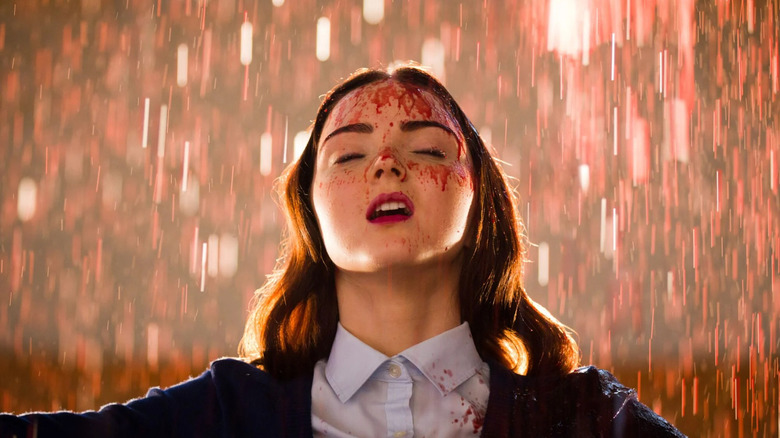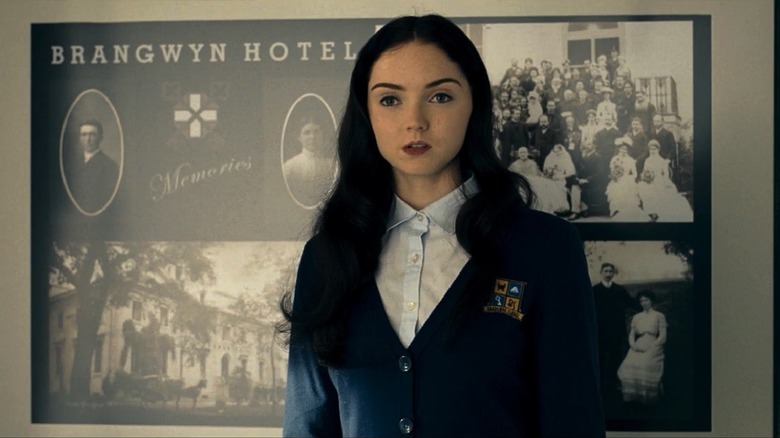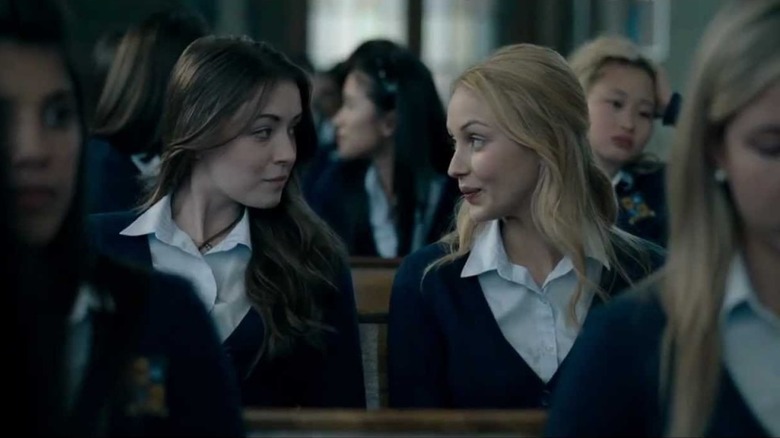
(Welcome to Year of the Vampire, a series examining the greatest, strangest, and sometimes overlooked vampire movies of all time in honor of "Nosferatu," which turns 100 this year.)
"The Moth Diaries" is a moody horror piece directed by Mary Harron ("American Psycho"), based on Rachel Klein's gothic novel of the same name. It was lambasted by critics for its dour atmosphere and flat narrative, with Hollywood Reporter calling it "about as scary and menacing as the harmless lepidoptera in the film's title," and Parallax View saying the film "fails to frighten, titillate or otherwise engage the imagination."
But what's special about "The Moth Diaries" is the way that it puts its own unique spin on vampire mythos. "The Moth Diaries" is more of a bildungsroman about a teenage girl grappling with her friendships, sexuality, and family's past. The film's moody atmosphere mimics the confusing weight of adolescence.
Set in an all-girls boarding school, "The Moth Diaries" begins when Rebecca's close friendship with Lucy (an homage to the female protagonist of "Dracula") is ruined by the arrival of Ernessa, a cryptic girl from England who is secretly a vampire and who sets out to destroy Rebecca's life. Harron's film is self-aware, knowingly acknowledging vampire tropes when Rebecca studies Bram Stoker's "Dracula" and Joseph Sheridan Le Fanu's "Carmilla" in her literature class and uses the lessons to defeat Ernessa. What's more, "The Moth Diaries" draws on the core ideas of those stories to twist the vampire genre in interesting ways.
A Vampire Tale Wrapped In A Coming Of Age Story

Rebecca's handsome English teacher says that every vampire tale contains three elements: blood, sex, and death. These are also frequently found in coming of age stories. Adolescence is an incredibly vulnerable and dramatic period in a person's life where everything feels like life or death, especially friendships and crushes. Teens are often overwhelmed by raging hormonal changes and newfound erotic feelings.
In the opening of "The Moth Diaries," the cloistered girls discuss losing their virginity and boyfriends (or lack thereof). Rebecca experiences sexual jealousy when Ernessa becomes closer to Lucy, waking up one night to find them enthralled in a passionate, moaning embrace. But like most of the film, it is difficult to tell whether this is reality, or simply a manifestation of her subconscious desires.
Vampires lust after blood as a life-giving source, but in the "The Moth Diaries" blood is primarily associated with death. Ernessa does not want to drink Rebecca's blood; she wants Rebecca to spill her own. Blood features visually throughout the film, from the appearance of Rebecca's menstruation to buckets raining down from the sky. Ernessa takes advantage of Rebecca's depression and suicidal thoughts, typical teenage maladies that are compounded by the memory of witnessing her father's death. "The moment of death is ecstatic. It is the most joyful sensation. You are being born into a new existence," Ernessa tells her, desperately trying to get Rebecca to cross to the other side. "The Moth Diaries" is a riveting mix of vampire iconography and teen melodrama about the pains of growing up.
Subverts Lesbian Vampire Tropes

"The Moth Diaries" borrows from the formative lesbian vampire novel "Carmilla" to explore the "intensity of female friendship and its blurred boundaries with romance and eroticism," according to Mary Harron. Like the title character of "Carmilla," Ernessa is a newcomer who is pale, beautiful, and seductively mysterious. She forges a deep emotional bond with her victim Lucy who, similar to Laura in the book, grows weaker by the day and refuses to eat. Their closeness enrages Rebecca, who has a palpable affinity for Lucy that is found in their tender exchanges and constant proximity.
"The Moth Diaries" defies what London Horror Society calls the typical formula of "the lesbian vampire disrupting the norm (heterosexual couple) and being killed by the male hero (patriarchy reinforced)." Instead, the film focuses on female relationships. Ernessa's affair with Lucy is just a way for her to get closer and manipulate Rebecca. In the end, only Rebecca has the power to defeat Ernessa on her own, finding an inner strength and independence that she never had before.
Lesbian vampire B-movies, particularly 1970s ones such as "The Vampire Lovers," "Daughters of Darkness," or "Lust For a Vampire," are stylish, provocative, and sometimes schlocky. The heavily sexualized female vampire is titillating and often filtered through the male gaze. "The Moth Diaries" is far more cerebral, its lesbian longing drenched in a pensive gloom. Rather than being the embodiment of transgressive desires, Ernessa symbolizes death; she is not there to seduce Rebecca, but to end her life. In this way, "The Moth Diaries" is a fascinating departure from other lesbian vampire stories.
Read this next: The 13 Best Movies About The Devil Ranked
The post Year of the Vampire: The Moth Diaries Puts A Teen Girl Twist On Traditional Vampire Tropes appeared first on /Film.
0 Comments